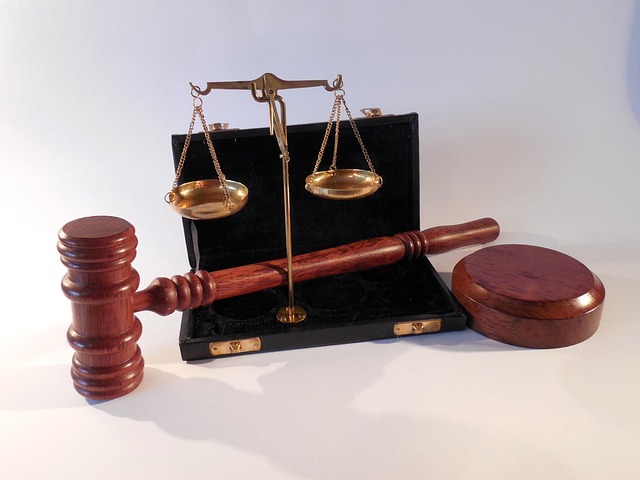Cybercrime and financial crime investigations rely on forensic technology and data analysis to uncover evidence like browser history, transaction records, and suspicious financial patterns, respectively. These methods, proven effective in landmark cases, serve as Examples of Evidence in Criminal Trials, aiding convictions and promoting transparency. Advanced analytics and collaborative efforts deter criminal activities and foster integrity across sectors.
“In the intricate web of financial crimes, probing and prosecuting offenders require a meticulous approach. This article delves into the critical aspect of finance crime investigations, focusing on the art of uncovering digital footprints as cybercrime evidence. We explore forensically analyzing financial records to secure convictions in trials, backed by compelling case studies showcasing successful financial crime probe outcomes. Discover practical examples of evidence in criminal trials, shedding light on how these strategies combat illicit activities.”
- Uncovering Digital Footprints: Cybercrime Evidence
- Forensically Analyzing Financial Records in Trials
- Case Studies: Success Stories of Financial Crime Probes
Uncovering Digital Footprints: Cybercrime Evidence

In today’s digital era, cybercrime has emerged as a significant concern for investigators and legal professionals alike. Uncovering the digital footprints left by criminals is akin to piecing together a complex puzzle in a bustling metropolis—every byte of data, every online interaction, and every click provides a crucial clue. This is where forensic technology plays a pivotal role, offering techniques to extract and analyze evidence from various sources, such as computers, smartphones, and even cloud storage. For instance, investigators can delve into browser history, examine deleted files, and track online transactions, providing tangible examples of evidence in criminal trials.
By sifting through these digital remnants, law enforcement agencies can build a compelling case, presenting concrete examples of malicious activities to courts. This robust evidence not only aids in securing convictions but also helps in avoiding a complete dismissal of all charges. For his clients’ benefit, legal professionals must be adept at utilizing these cybercrime investigation tools and understanding the intricacies of digital forensics, ensuring that every piece of evidence is handled meticulously to prevent any indictment or charge from being dismissed on technical grounds.
Forensically Analyzing Financial Records in Trials

In financial crime probes, forensically analyzing financial records plays a pivotal role in unearthing illicit activities and providing concrete evidence in criminal trials. This meticulous process involves scrutinizing complex financial transactions to identify suspicious patterns, anomalies, or discrepancies that may point to fraudulent behavior. By employing advanced data analytics tools and expert witness testimony, investigators can extract significant insights from these records, serving as compelling examples of evidence in criminal trials. For instance, identifying unusual transfers, hidden assets, or structured transactions can help prove money laundering schemes or concealment of illicit gains.
For his clients, achieving extraordinary results often hinges on the robustness of this financial record analysis. The insights gleaned can not only strengthen prosecution cases but also guide strategic decision-making in defense strategies. Moreover, understanding these financial crimes has broader implications for philanthropic and political communities, as it enhances transparency and accountability within their operations, fostering a culture of integrity and deterring potential wrongdoings.
Case Studies: Success Stories of Financial Crime Probes

Financial crime probes have been instrumental in bringing justice to light, with numerous success stories that serve as examples of evidence in criminal trials. One notable case involves a global banking institution caught in a web of money laundering schemes. Through meticulous investigation and the use of advanced analytics, authorities unraveled a complex network of shell companies and offshore accounts, leading to significant financial recoveries and convictions. This achieved extraordinary results, demonstrating the power of collaborative efforts between regulatory bodies, law enforcement, and financial institutions.
Another compelling example involves a tech startup accused of securities fraud. By examining digital footprints and analyzing trading patterns, investigators uncovered a meticulously planned scheme that defrauded investors of millions. The case was successfully prosecuted in jury trials, where the presentation of concrete evidence and expert testimonies led to significant penalties and reforms within the respective business. These instances highlight how financial crime probes, through robust investigation techniques and the utilization of innovative technologies, can not only deter future crimes but also foster a culture of integrity and accountability.
In conclusion, the intricate world of finance crime probes has evolved significantly with advancements in technology. Uncovering digital footprints and forensically analyzing financial records have become powerful tools in combating cybercrime. The case studies presented showcase successful investigations that highlight the importance of robust forensic techniques and the value of evidence in criminal trials. By leveraging these methods, law enforcement agencies can navigate complex financial crimes, ensuring justice is served through concrete examples of evidence in real-world scenarios.






